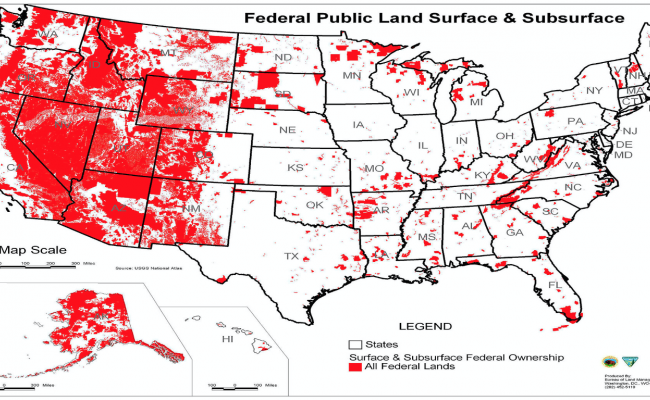On July 16, 2020, the President’s Council on Environmental Quality (CEQ) finalized an overhaul of the guidelines for implementing the National Environmental Policy Act (NEPA) regulations (rule). Supporters of the new regulations applauded the changes, but the states and numerous national environmental groups vowed to challenge the new rule in the courts. The timing of the final rule just prior to the Presidential election in November will also create a great deal of uncertainty for projects currently undergoing NEPA reviews and possible delays by those planning projects.
The author believes that the biggest losers may be renewable energy projects and especially linear infrastructure projects like high-voltage transmission lines that will be sited on federal lands. These projects are not exempt from NEPA, which is triggered when they are located on federal lands or reservations (Figure 1). In addition, project developers must also obtain federal special use permits and Clean Water Act (CWA) Section 401 permits from the land management agencies and state water quality agencies, respectively.
The NEPA process under the old regulations was nothing to brag about. For example, the 730-mile long TransWest Express electric transmission project that will pass through three western states and bring wind power to California and Arizona, will take between 14 to 17 years to complete the NEPA and other federal, state and county approvals. TransWest Express LLC hopes to start construction in 2021 and deliver power by 2024. That is unacceptable if renewables and clean energy transmission are to play a significant part in meeting state greenhouse gas emission goals and decarbonizing the electric power sector.
The author will highlight the most significant changes of the new NEPA regulations and recommend a number of steps that energy developers and stakeholders can take to reduce delays and litigation. He will also address how duplicative reviews at the federal, state and local level plague energy infrastructure development when NEPA is triggered on federal land or by specific federal agency permits on non-federal energy projects.
Table 1. Major Substantial and Procedural Changes to the NEPA regulations
|
Substantive Changes · Eliminates indirect and cumulative effects analyses · Revises analysis to determine “Significant Effects” to direct project effects and project nexus · Limits consideration of alternatives to the proposed project · Simplifies “Effects” analysis especially when the project is controversial · Codifies previous judicial decisions showing that a NEPA compliance violation alone is insufficient to be considered “irreparable harm” or to award relief to a plaintif · Recognizes Mitigative Finding of No Significance in the regulations
|
Procedural Changes · Time and page limits · Required schedules · Approval of applicant-prepared Environmental Impact Statements (EIS) · Expanded use of Tiering and Adoption · Elevates consultation with Tribal organizations by adding “Tribal” to the phrase “State and local tin regulations
|
Read entire article in Climate & Energy Journal


